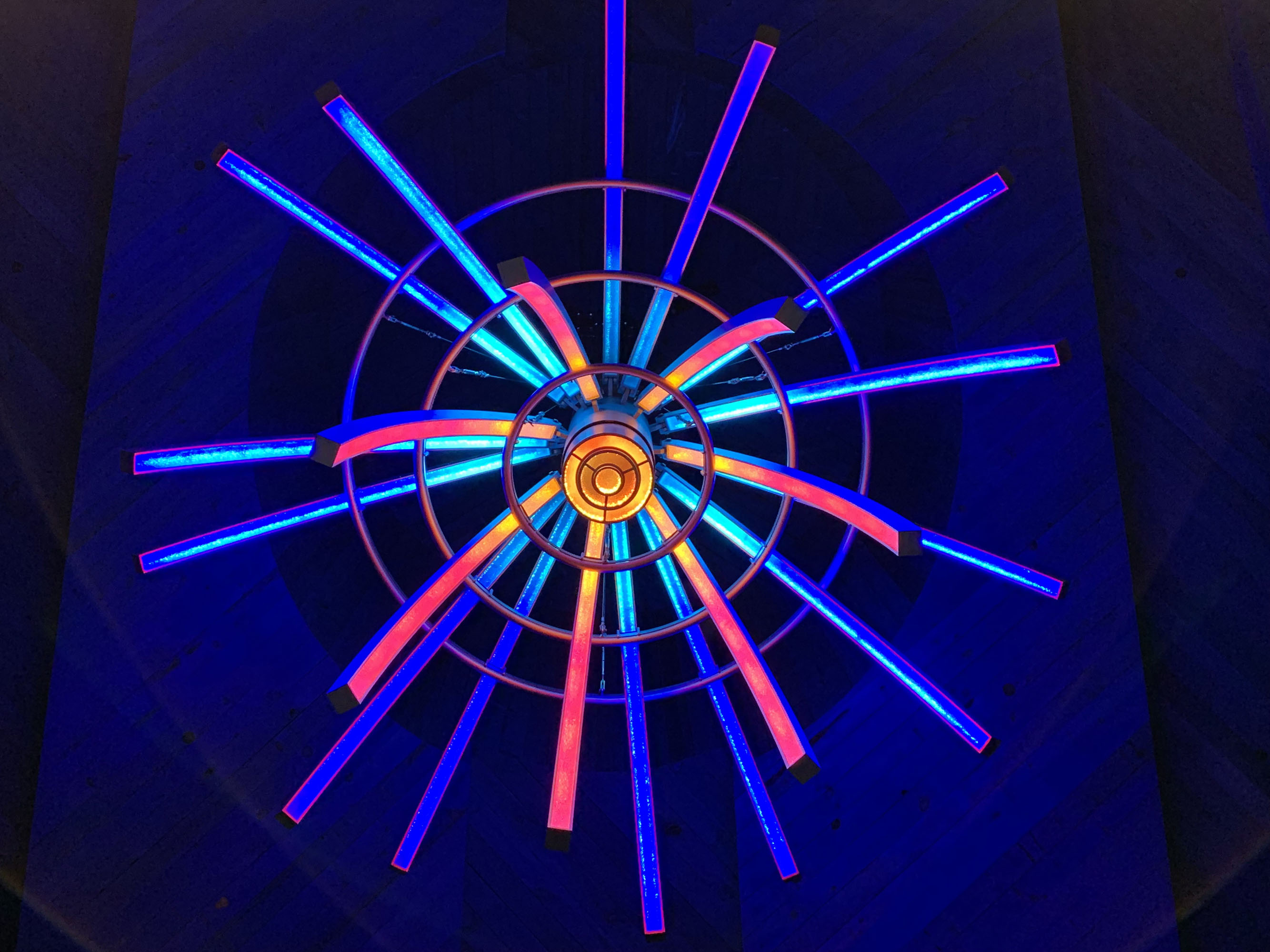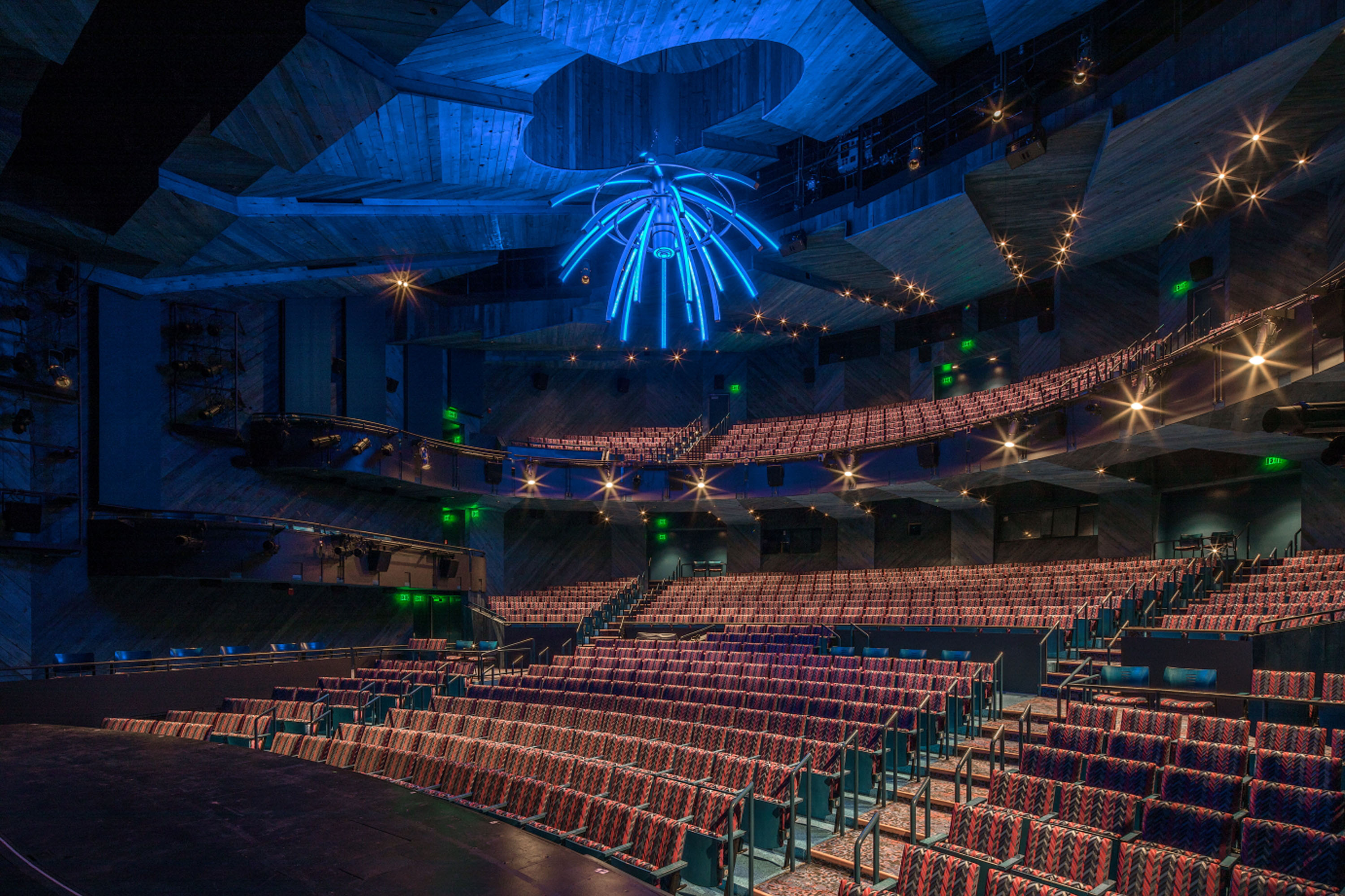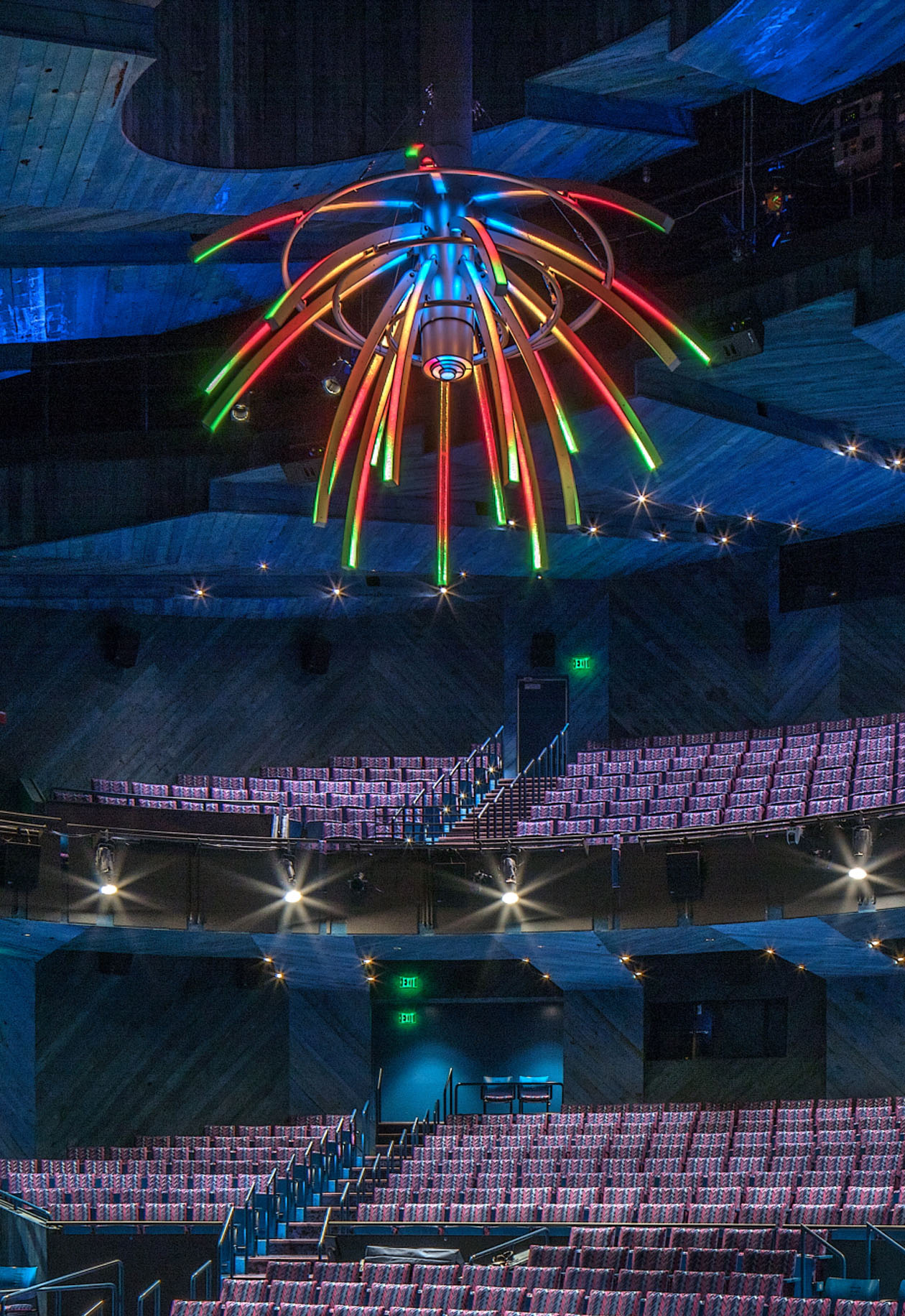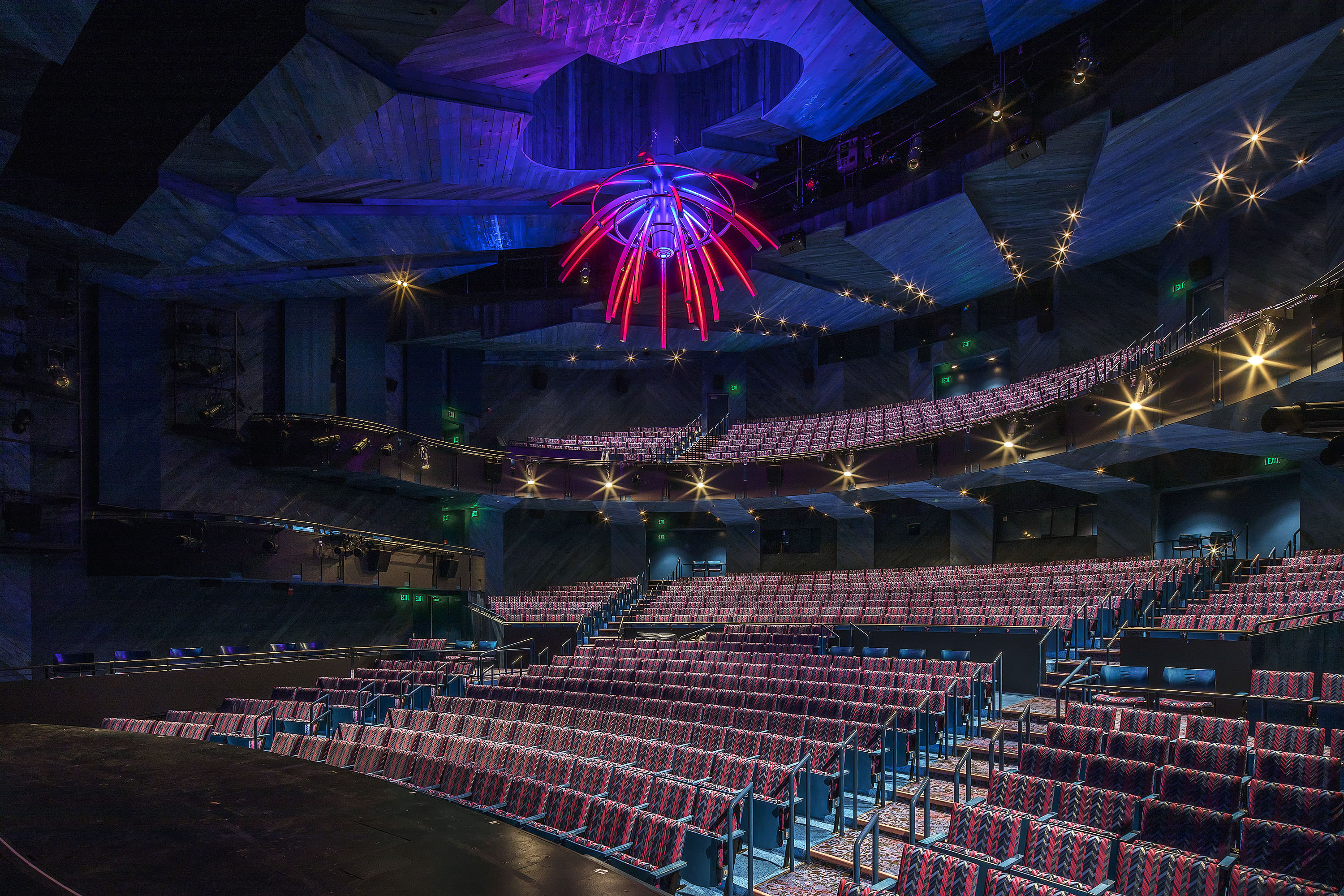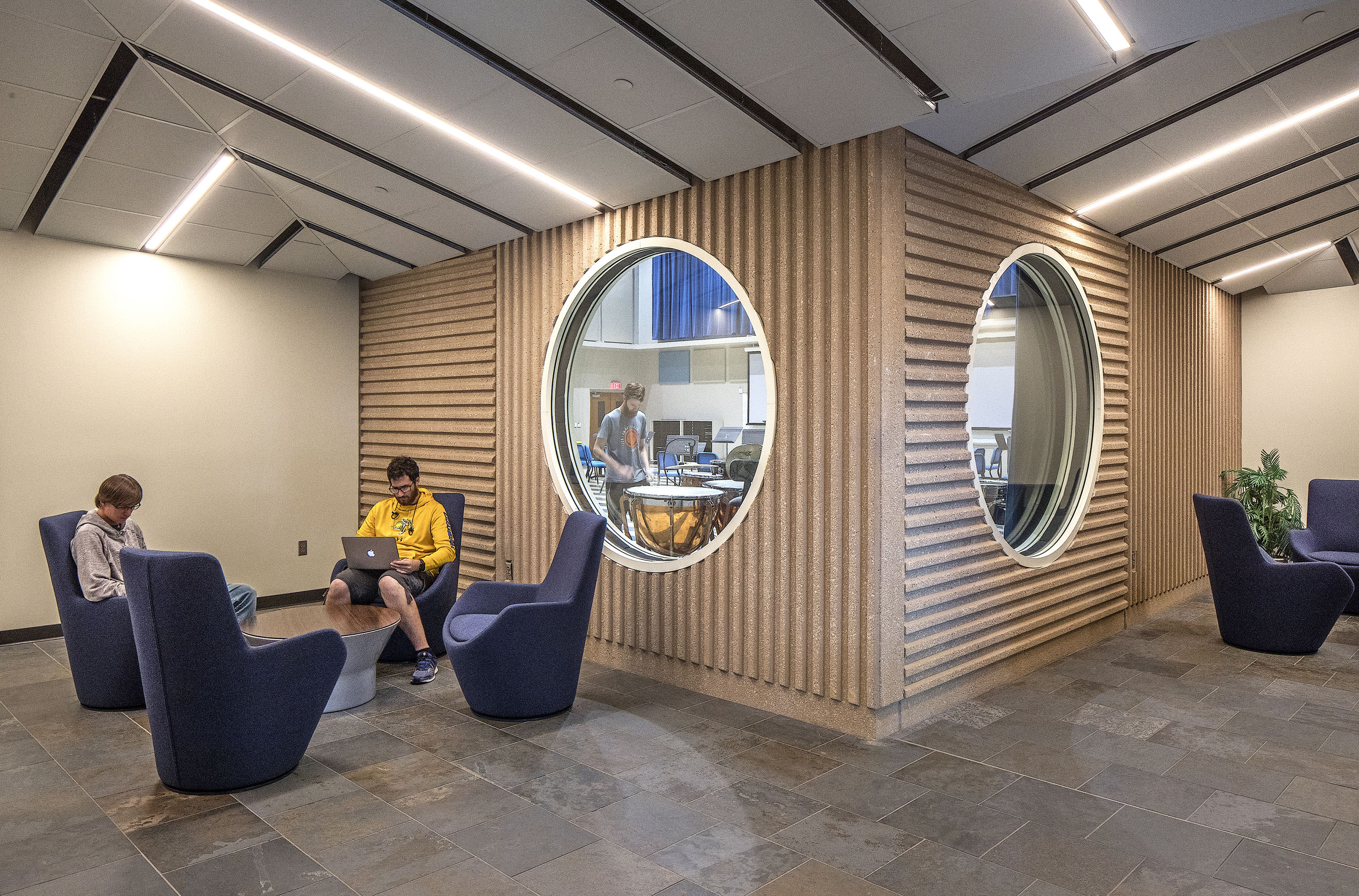
Location: Brookings, South Dakota
Completion: 2019
Scope: Interior Lighting, Theater House Lighting
Design Team: Holzman Moss Bottino Architecture, Architecture Inc.
Awards: 2020 IES Illumination Award of Merit
Photography: Tom Kessler
Part renovation and part addition, this performing arts center in South Dakota provides top-of-the-line music and performance facilities for the community and students in the region. The expanded building allows all students in dance, music and theater to finally be located in one building, to promote and inspire artistic development. The lighting design rises to the challenge by providing solutions to meet the priorities of each space.
In the lobby, corridor and support spaces, the design reinforces the dynamic ceiling design, but on a strict budget. Constraints of existing conditions yielded a ceiling-grid that pitches and chamfers to create dynamism on a budget. Slot lighting selectively follows slopes and angles reinforcing the effect. Backlit art glass wraps the entrance to the main theater.
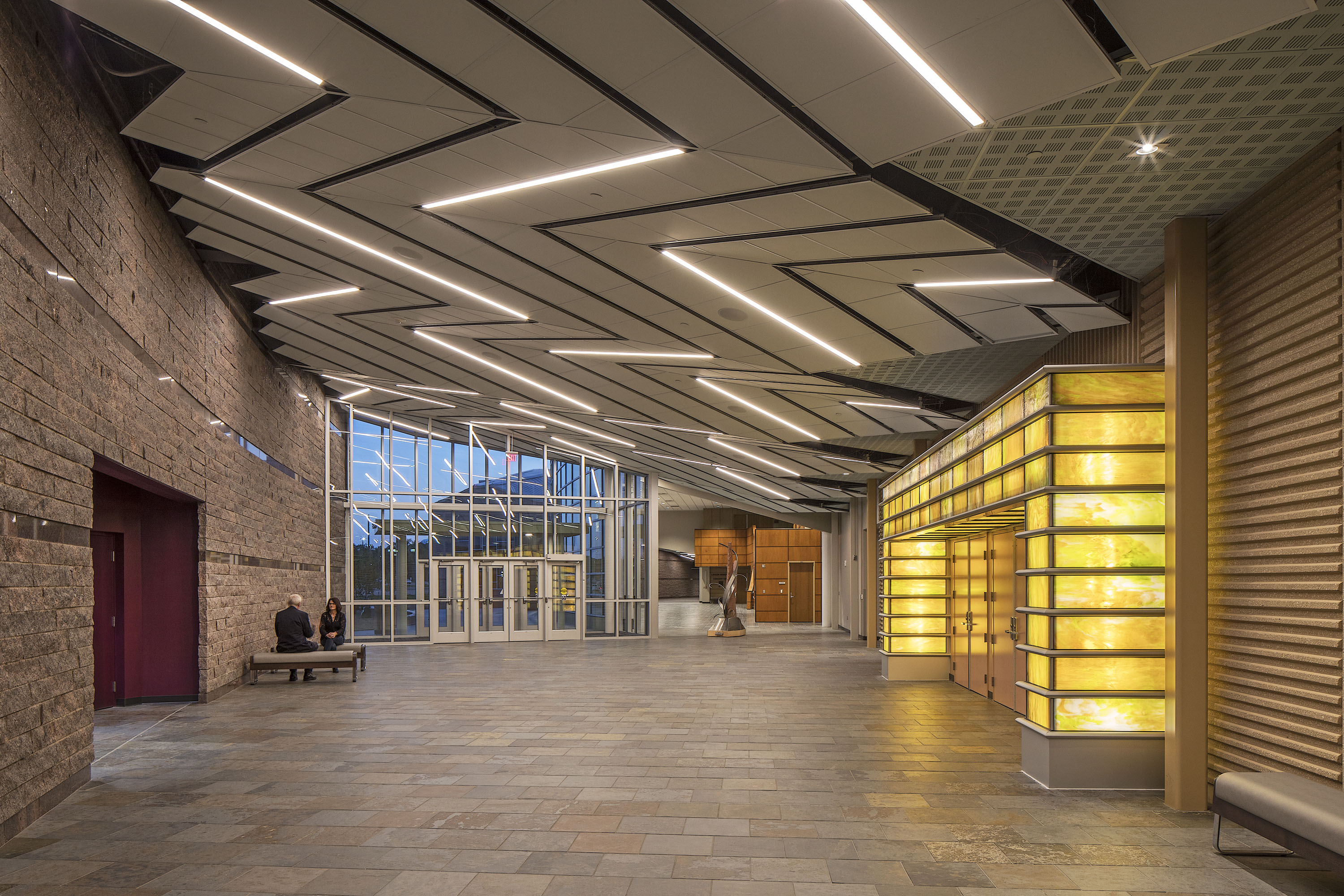 |
In the Recital Hall, mounting on the wood ceiling and concrete walls was prohibited, so houselights for the orchestra integrate into the acoustical reflector. Lighting pipes on balcony fronts tuck in mini-theatrical fixtures for circulation paths. Side galleries and textured walls are grazed with downlights from upper acoustical shelves.
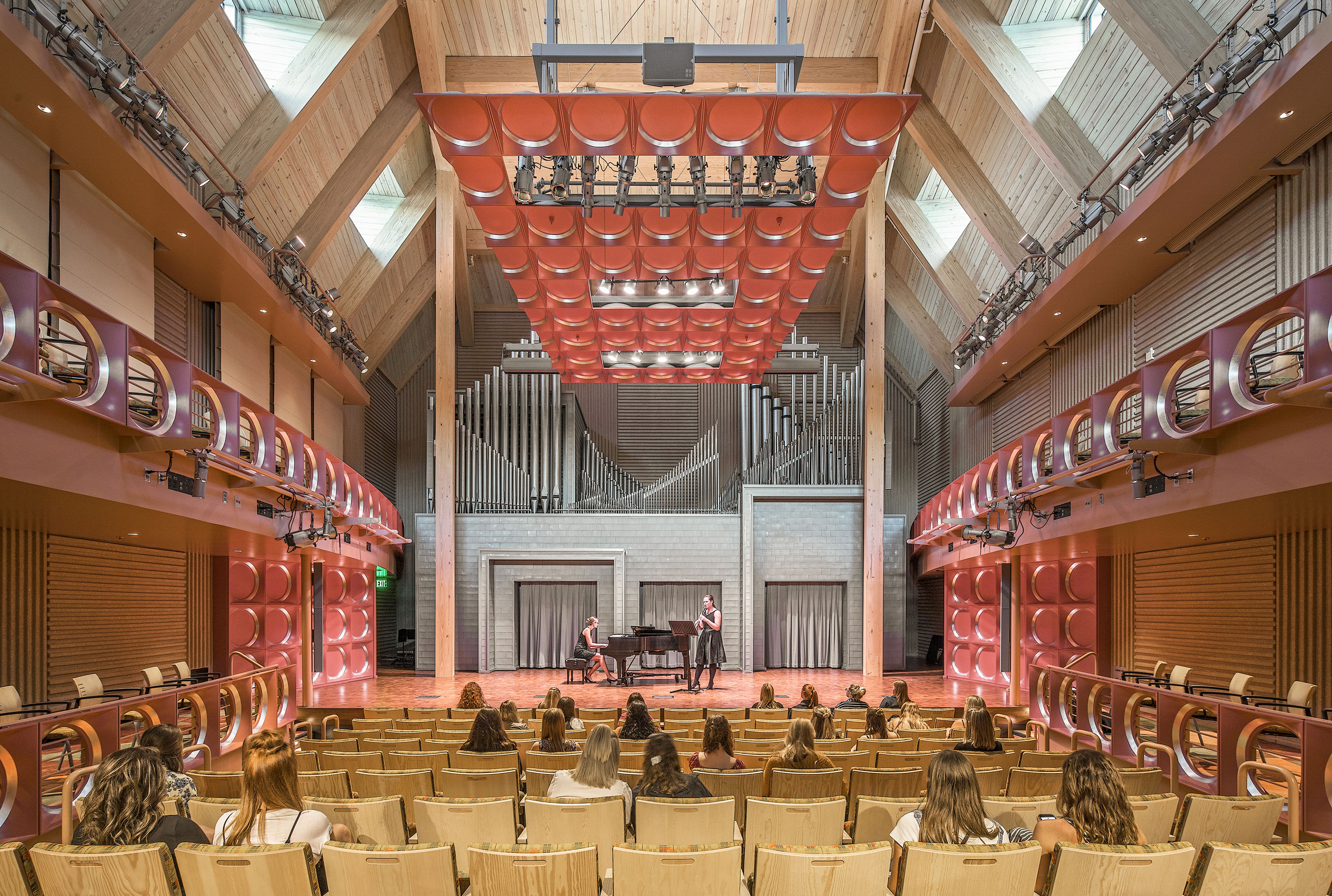 |  |
| The lighting design at the balcony stair of the Recital Hall is well integrated with the architecture to allow the room features to be expressed. The theatrical lights stand out as the tools for performance, encouraging students to interact with them and not the house and architectural lighting. Backlit banners warmly illuminate the area and provides mounting arms for theatrical-style houselights to adequately illuminate the stairs and back-balcony, with nothing affixed to ceiling! Steplights are integrated into the railing design. |  |
In the proscenium theater the spatial limitations spurred an innovative design that combines technical controls with mechanical movement. The custom designed RGBA programmable and movable chandelier tucks up into a ceiling dome to allow high-raking followspots to reach the stage. The chandelier is also a working tool for the students, allowing them to program the lighting effects to fit the storyline of their performances. Initial inspiration came from a firework raining down in the dark blue sky, but quickly developed into many more possibilities.
 |
Working with a limited budget the design team decided one focal element could transform the space while all other house lighting remains simple. Spatial limitations and straightforward architectural design create a platform for an inventive programmable and kinetic chandelier. To achieve this, an internal linear actuator slides the center shaft forcing the arms to flare up and flatten by pivoting on the support rings. By offsetting the diameter of the support rings extends the arms range of motion. This varying range of motion creates three tiers in the deployed position. In the flattened and nested position the arms are arranged in a radial pattern. The varying positions and perspectives of the chandelier allows more programming opportunities to communicate stories and effects.
To prevent interference with aiming angles from the followspot, the chandelier had to retract and flatten to fit within the ceiling dome. The section study below illustrates how this is achieved. The green is the deployed chandelier, the blue is the flattened state, preparing for stowing, and the red shows the final stowed chandelier.
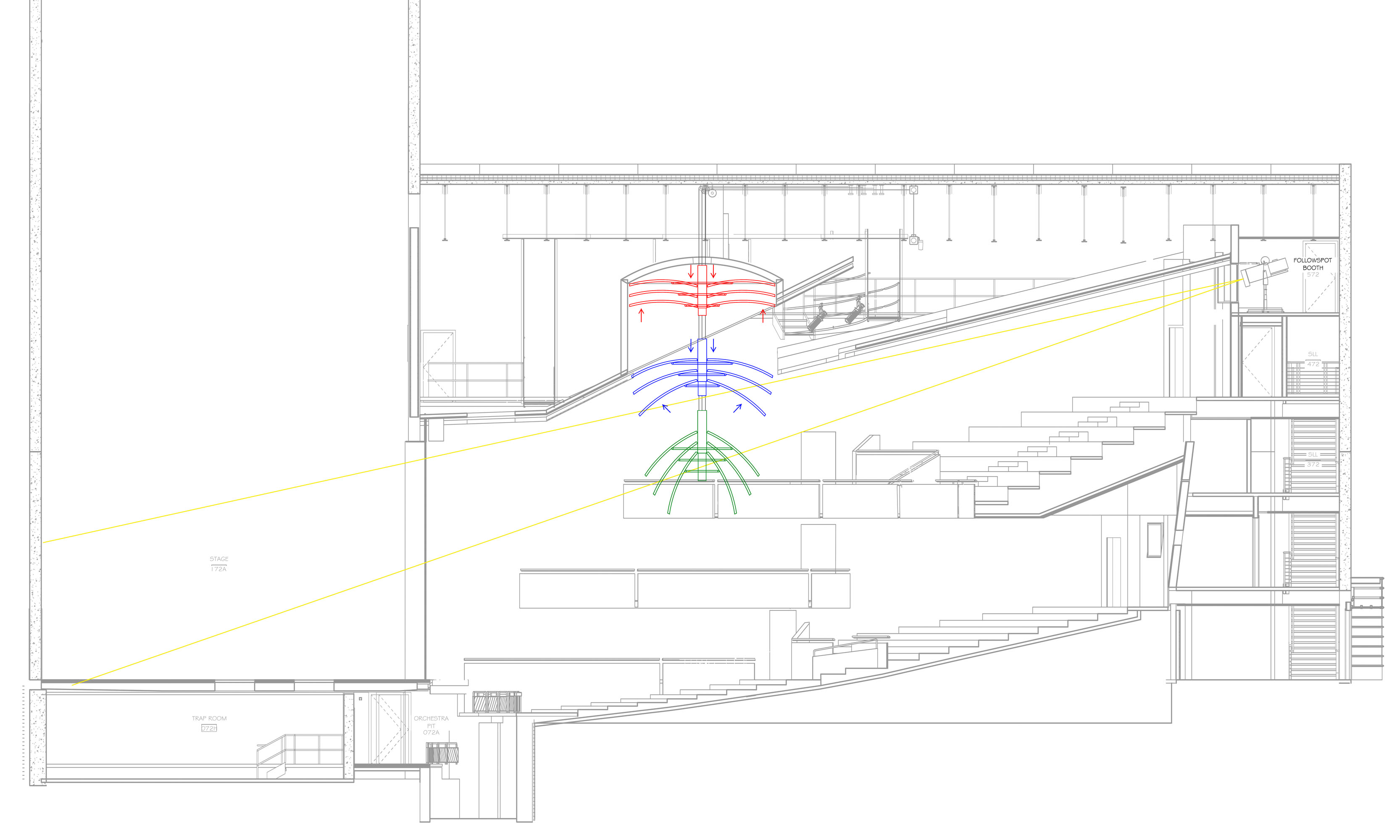 |
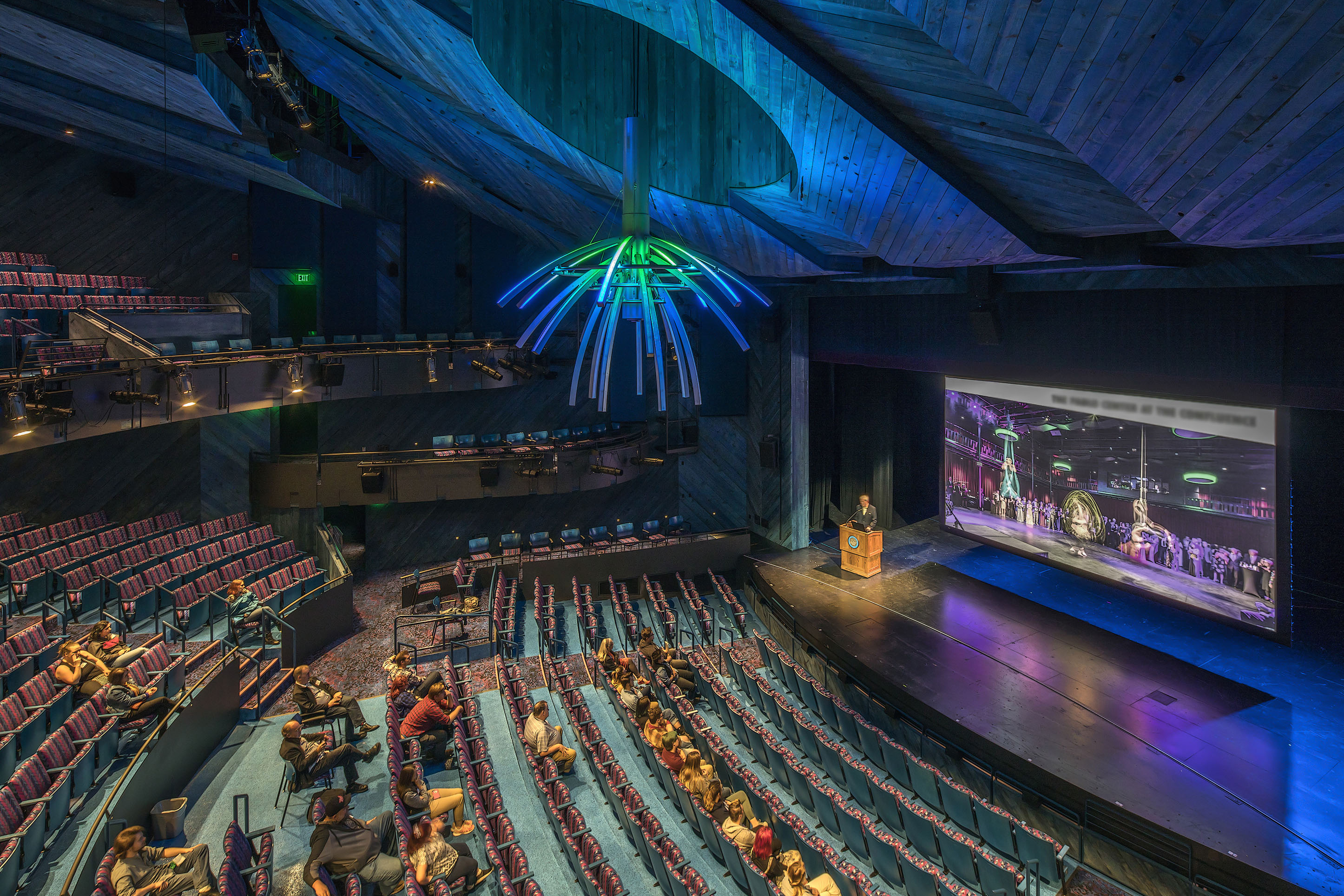 | 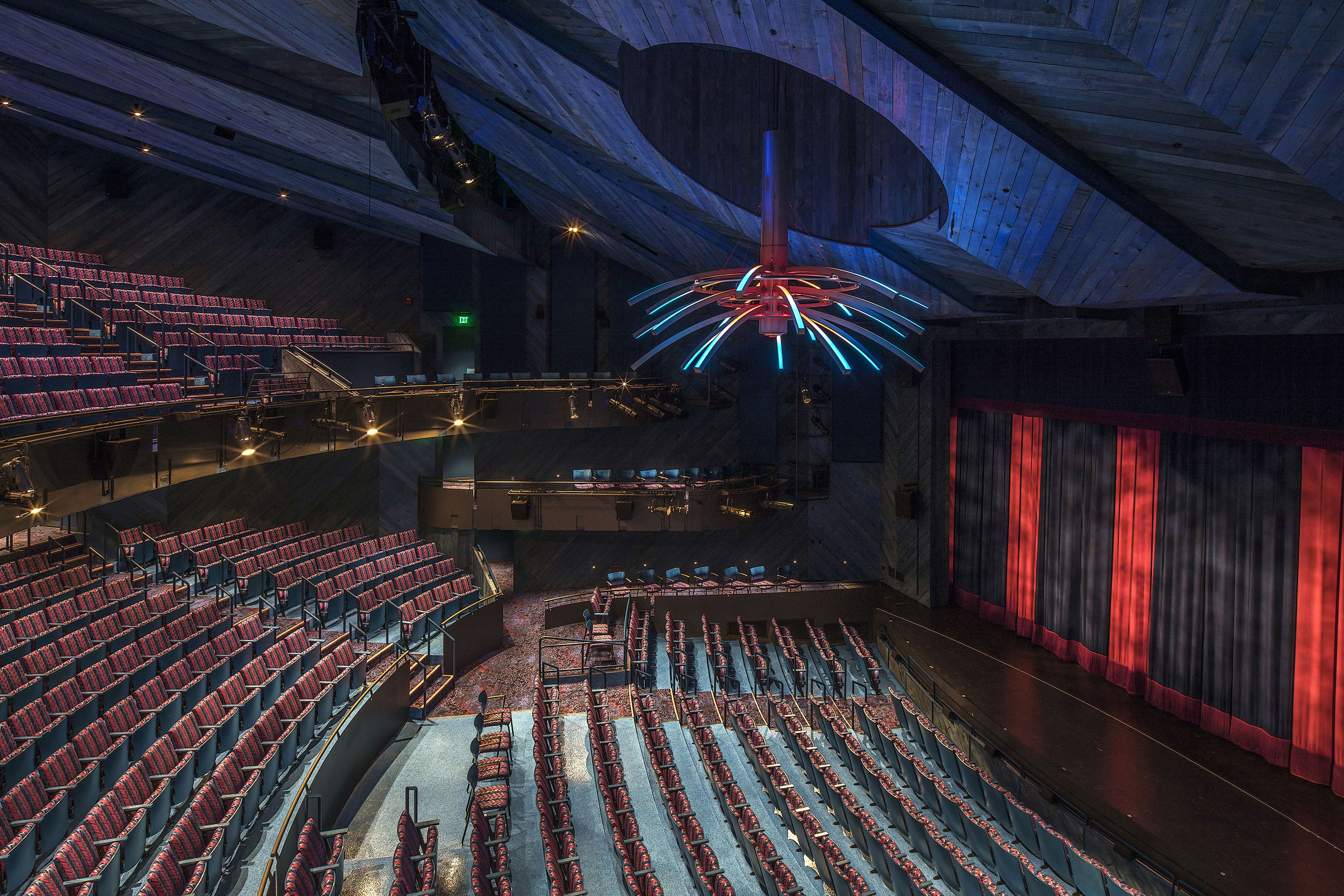 | 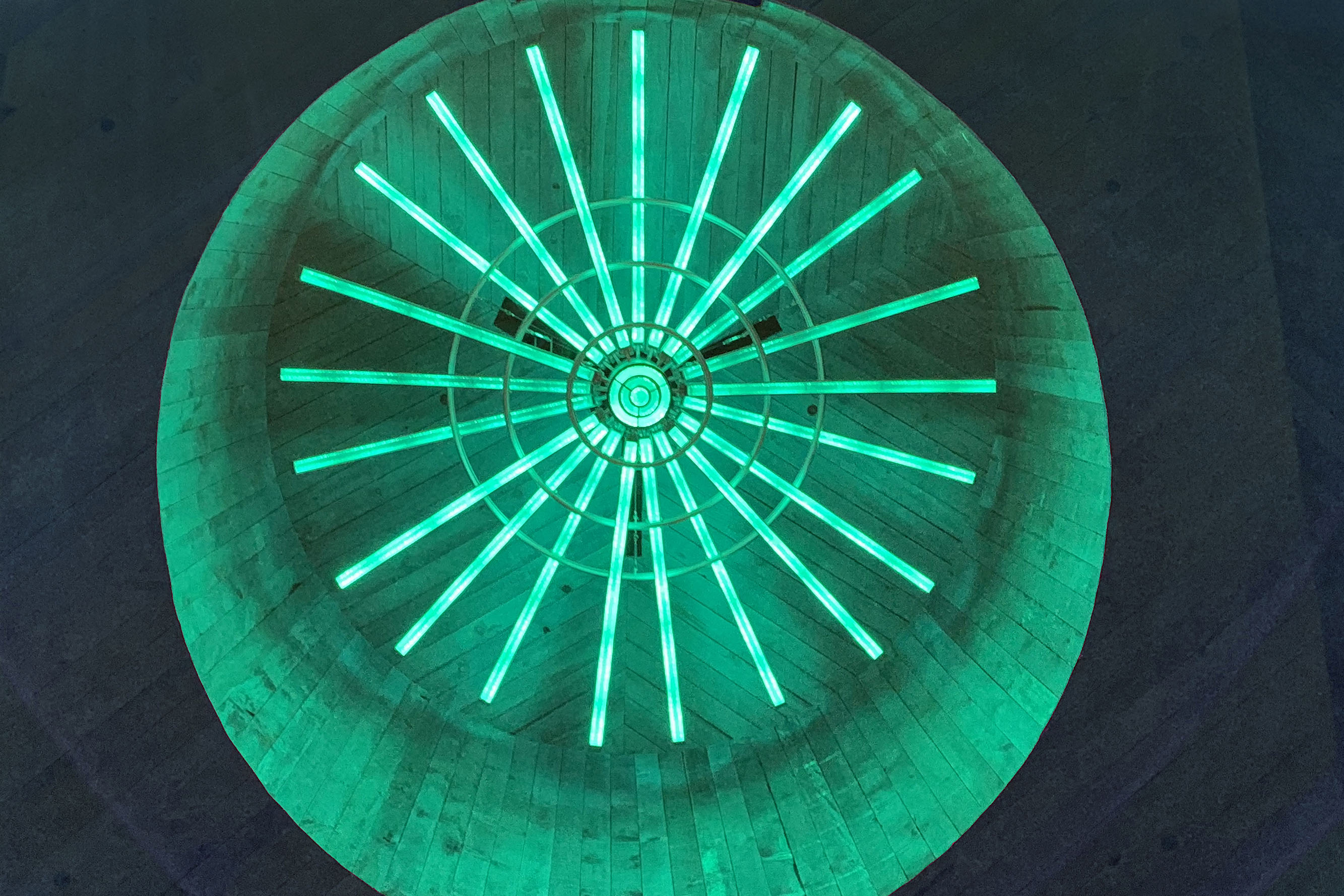 | ||
Deployed Chandelier | Flattened Chandelier (ready for stowing) | Stowed Chandelier |
Two runs of RGBA chips every 0.75” line the sides of the chandelier arms to allow an immense possibility of colors and effects. Custom programming effects are compiled and arranged into themed shows that relate to the chandelier shape and position such as flowers blooming, swirling storm, and color explosion. These controls tie into the theatrical controls system and all lighting shows and house lighting scenes can be triggered via touchscreen lighting board. Located in the mid-west, this installation provides exposure and access to advanced design and controls for students in the region. Extensive coordination, foresight and communication with contractors, manufacturers, programmers and university personnel was required to pull off the precise installation schedule. Creating a comradery with the whole team was essential in ensuring the design met its full potential. A special lens was researched and selected to create sparkle yet obscure view and blend color of diodes. Multiple mockups of joints, lenses and wiring with the manufacturer ensured the robust mechanical elements remain elegant.
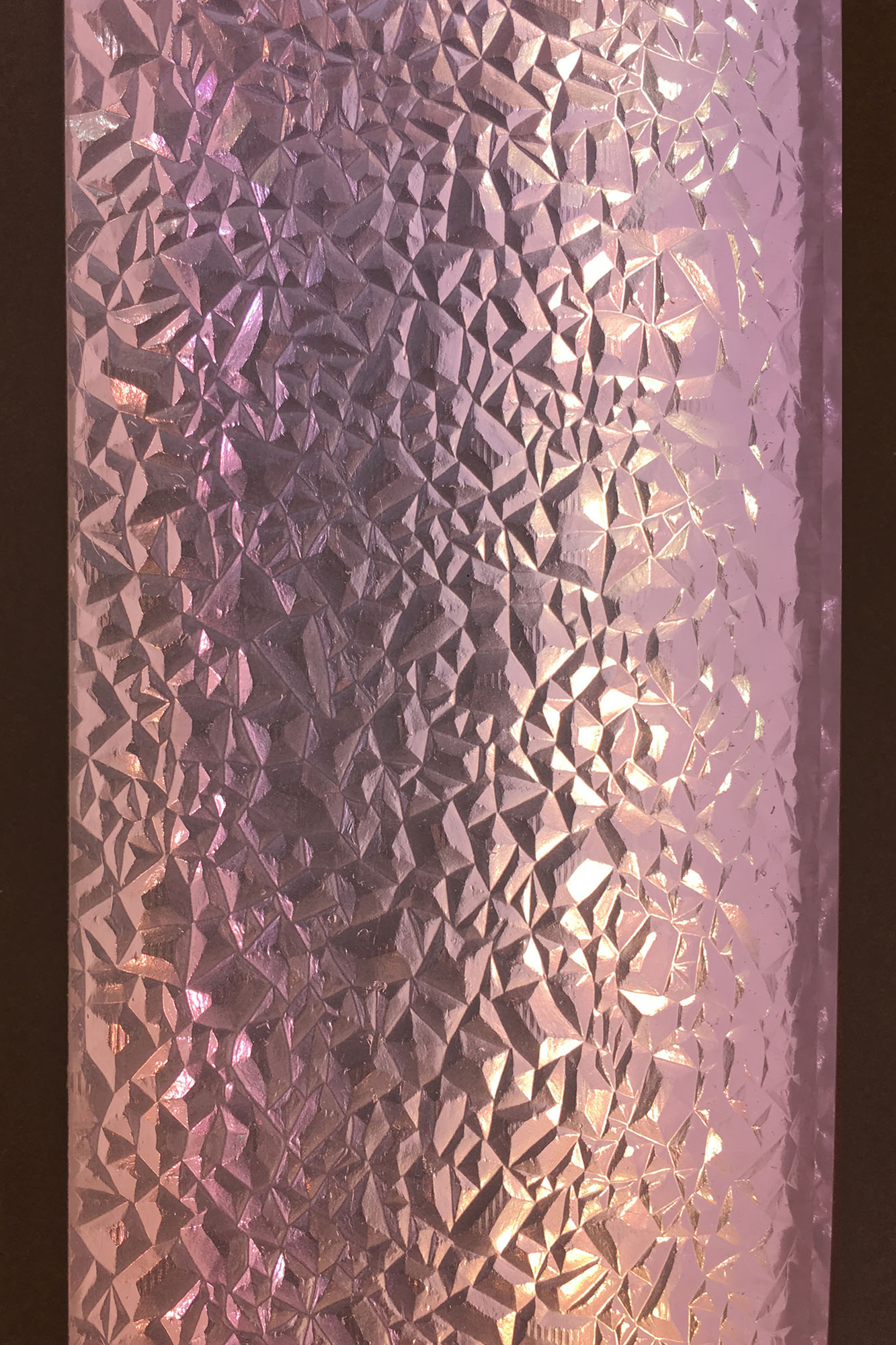 | 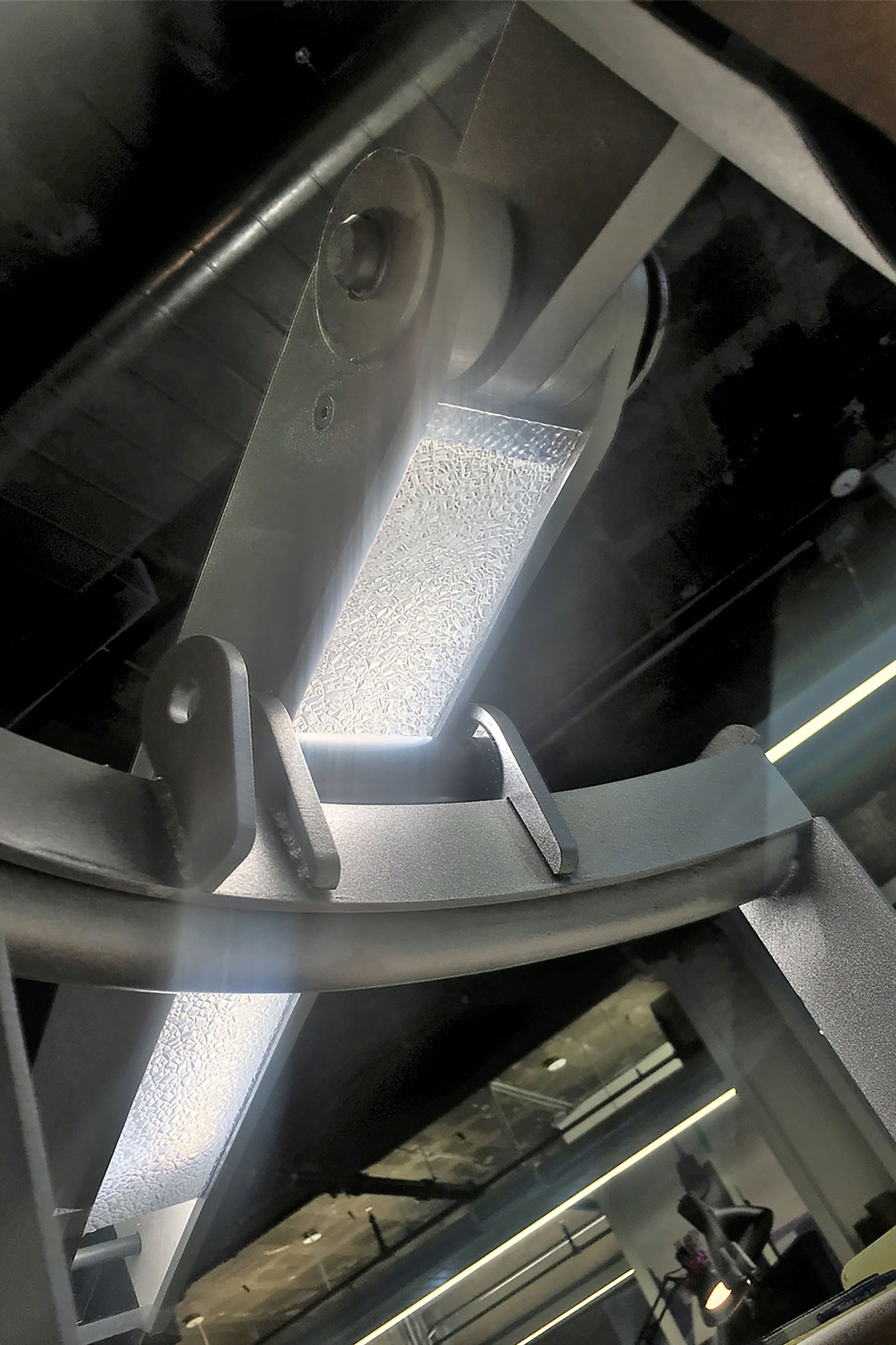 | |
Lens Closeup | Mockup of Moving Armature |
The end result uses bold colors and effects to change the feel of the space from a single focal fixture. Arm articulation is controlled via the lighting control system and programmed into shows at appropriate time to relate to lighting effects. During commissioning five shows were programmed into the system. Standard programming effects are compiled and arranged into themed shows that relate to the chandelier shape and position such as flowers blooming, swirling storm, and color explosion.
Typical theatrical DMX system would require 41 DMX universes and 41 cables feeding to the chandelier to control all the LED channels. This would be incredibly cumbersome and problematic for the rigging system. Using ArtNet to talk to LEDs, allowed control of ~21,000 individual diode addresses with one cat5 cable and one power drop. A video show controller, meant for live entertainment shows, was used to program and run the Artnet controls. To make this system work in an architectural environment, it was then connected to the main theatrical DMX system where a series of signals is sent to run the lighting shows. This allows shows to be saved and easily triggered via touchscreens. The video controller and DMX controller are permanently setup on servers in the electrical closet to allow system to run as needed in an architectural environment.
Most importantly, this system was designed as a learning tool for students. The infrastructure allows a laptop connection via Ethernet port in the theater to allow live programming. Students can then develop lighting shows as part of their performances. These shows can be saved and triggered via the touchscreens or lighting board. This system allows the student unique experience and exposure to the latest entertainment software broadening their knowledge of the industry and potential professional opportunities.
|
|
This video shows a compilation of the chandelier deploying and retracting within the space. The last scene shows the chandelier view from below.
House lighting for orchestra seating is mounted to lighting pipes and catwalks for easy access. Houselights at rear are mounted to sides of coffers. Above the balcony discreet removable ceiling panels allow easy aiming and maintenance from above. Remote drivers at catwalks for ease of access. All lighting in the performance spaces is LED, controlled via DMX, and dims to dark. Extensive testing and mock-ups, using the specified luminaires on the specified control system allowed the lighting designer to select the best drivers, and to work with the controls manufacturer to set the best dimming curves for each driver type, well in advance of the ordering and installation process.


